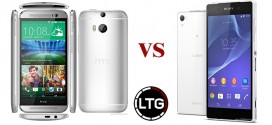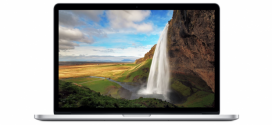Intel unveiled its RealSense 3D camera at an event in London. With it was the best floating, touch controlled “hologram” you can see in real life. Tony Stark would have been impressed. The RealSense 3D camera is going to start appearing in computers in the next few months, with eight manufacturers including it in devices. It’s like a super sensitive version of Kinect and Leap Motion combined that can detect facial expressions, emotions and detailed hand movements. But the most impressive thing it’s the the “holographic” display.
It works using special glass which channels light, from a laptop screen beneath, up into the air. Then using a RealSense 3D camera finger location can be detected allowing users to “touch” icons floating in the air. It really feels like science fiction made real. Unfortunately Intel says it was just proof of concept at the time. On the positive side, we were told the hardware and SDK are available for any developer to use. Shop displays, for example, could use these floating images with gesture controls for a germ free way of interacting with product displays. Or on a larger scale, once multi-angle viewing is achieved, this could be an Iron Man style control system for boardrooms where virtual objects are literally flung about the air.
While holographic displays are one future possibility for RealSense it’s got plenty of current uses that will change computing soon. One is 3D scanning. Since the camera is so sensitive it’s possible to hold an object in front of it, rotate the object, and it will be virtually duplicated. 3D scanning is a hugely exciting area that will help bring 3D printing into the mainstream. It also opens up some interesting debates on rights management. How will Lego be able to keep its blocks from being scanned, shared and printed, for example? It’s like the era of the MP3 all over again, but for physical objects.
Another smart use for RealSense we were shown was green screening. Since the camera can detect a user’s position in relation to their background it can simply cut them out allowing them to project any background. Imagine being in a Skype meeting and projecting your background as the office, while on a beach. Just an idea.
The RealSense camera isn’t just about depth as it also has facial recognition smart enough to detect emotion and even heart rate. While Microsoft has claimed the Kinect can do this too we haven’t seen many real world examples. We imagine that the RealSense camera, built into the next generation of laptops, will lend its SDK to a lot of software. Over 35,000 developers have already got the SDK. Expect to see the RealSense 3D camera starting to appear in laptops in the coming months. The super slim unit will also be available as a stand-alone device along with the SDK soon.
 Load the Game Video Games, Reviews, Game News, Game Reviews & Game Video Trailers
Load the Game Video Games, Reviews, Game News, Game Reviews & Game Video Trailers



